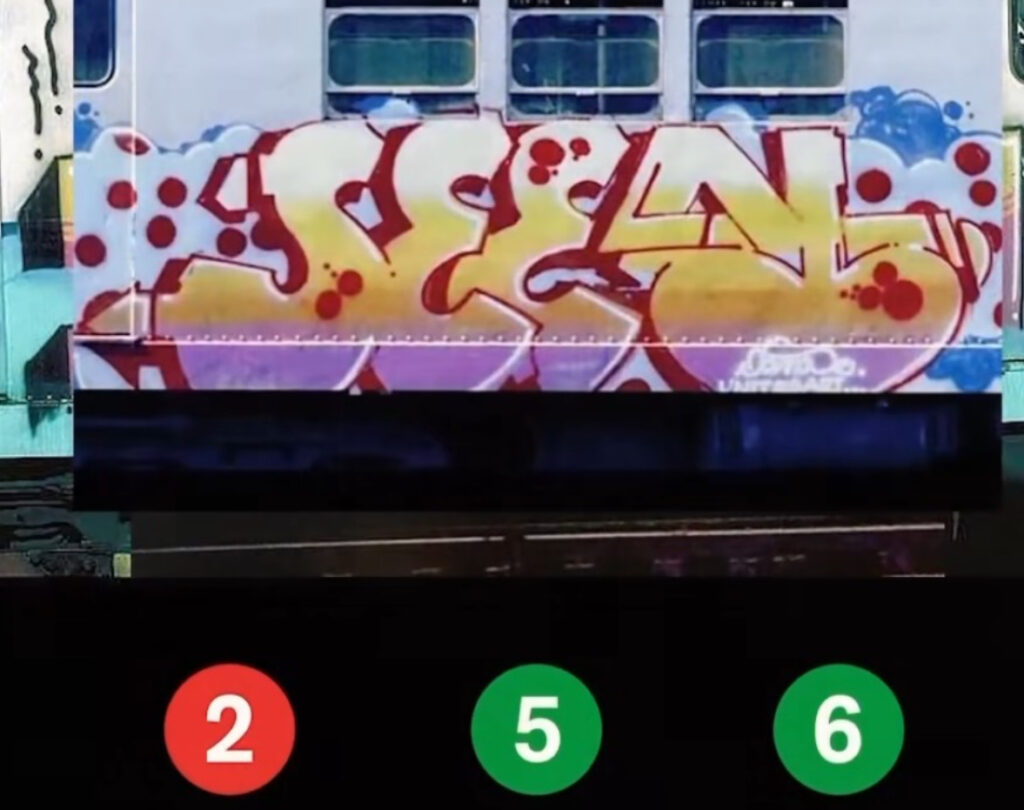Richard “SEEN” Mirando is one of the most legendary figures in graffiti history, an artist whose bold and unapologetic style has left an indelible mark on New York City’s subway system, global street art, and contemporary urban culture. Rising to prominence in the 1970s, SEEN was not just a pioneer but a cultural force, setting a high standard for graffiti lettering and large-scale productions. His influence, documented in Style Wars, Martha Cooper and Henry Chalfant’s Subway Art, and even video games like Marc Ecko’s Getting Up, has reached generations of artists, inspiring them to push the boundaries of creativity and self-expression.
Graffiti’s Rise in 1970s New York
New York City in the 1970s was a gritty and chaotic metropolis, where creativity thrived amid urban decay. The subway system became a rolling canvas, a place where young artists could make their mark, communicate with the city, and push their artistic limits.
SEEN started writing in 1973, at a time when graffiti was rapidly evolving from simple tags to intricate, full-color murals. Unlike many early writers, SEEN didn’t just put his name up—he created elaborate, polished, and visually explosive masterpieces that redefined what graffiti could be.
His work quickly stood out for its massive scale, bold colors, and incredibly clean lettering. While many artists struggled to control the spray can, SEEN mastered the craft, making his name one of the most recognizable in the New York graffiti scene.
The Subway King: SEEN’s Signature Style
Bold, Legible, and Iconic Lettering
SEEN’s lettering style became the gold standard for subway graffiti. His letters were:
Massive in size, stretching across entire train cars.
Highly stylized, yet legible, making his name instantly recognizable.
Sharp, clean, and colorful, showcasing his ability to control spray paint like few others could.
Unlike some graffiti artists whose tags were small and intricate, SEEN’s approach was about making a statement through size and visibility. His pieces dominated entire subway cars, turning moving trains into rolling murals that demanded attention.
Mastery of Color and Shading
SEEN wasn’t just writing his name—he was painting full-blown works of art. His use of:
• 3D shading techniques
• Bright, high-contrast color schemes
• Wild outlines and bold backgrounds
helped transform simple graffiti lettering into an immersive, eye-catching visual experience.
Large-Scale Productions & Wildstyle Influence
SEEN’s work often went beyond just lettering. He was one of the first artists to create full train pieces, incorporating cartoon characters, cityscapes, and wildstyle elements. His work on New York City subways set the bar for what could be achieved with a spray can.
One of his most famous pieces?
A whole-car production featuring a massive Superman logo, a testament to SEEN’s ability to mix pop culture, street art, and personal branding into one seamless design.
SEEN & The Evolution of Graffiti Culture
Martha Cooper & Henry Chalfant’s Subway Art
SEEN’s work gained international recognition thanks to Martha Cooper and Henry Chalfant’s Subway Art (1984). This groundbreaking book documented the New York graffiti movement, capturing SEEN’s legendary full-train productions alongside other pioneers like Dondi, Futura 2000, and Lee Quinones.
Subway Art helped to:
Introduce graffiti as a legitimate artistic movement to audiences worldwide.
Cement SEEN’s reputation as one of the best to ever do it.
Inspire new generations of graffiti artists across Europe, Asia, and beyond.
Style Wars: A Documentary That Immortalized SEEN
The 1983 documentary Style Wars, directed by Tony Silver and produced by Henry Chalfant, captured SEEN in his element. It provided a raw and unfiltered look at graffiti culture, highlighting the passion, conflict, and creative energy that fueled the movement.
Watching SEEN and his contemporaries at work in Style Wars made it clear:
• This wasn’t just vandalism—it was a form of urban storytelling.
• These artists weren’t criminals—they were innovators pushing the boundaries of artistic expression.
The SEEN Legacy: From Subway Cars to Galleries
As New York City cracked down on graffiti in the mid-1980s, SEEN, like many of his peers, began exploring new avenues for his art.
The Transition to Canvas & Galleries
By the late 1980s and early 1990s, SEEN’s work was being exhibited in galleries alongside pioneers of street art and contemporary pop culture. His ability to:
Maintain his graffiti identity
Transition into the fine art world
Still create raw, powerful urban-inspired pieces
proved that his artistic vision was not confined to the streets.
Influence on Pop Culture & Fashion
SEEN’s signature bubble letters, explosive color palettes, and bold designs influenced:
Hip-hop album covers
Streetwear brands and sneaker culture
Video game aesthetics (Marc Ecko’s Getting Up: Contents Under Pressure)
From Nike collaborations to Supreme’s streetwear designs, SEEN’s influence is still visible in today’s fashion and design industries.
The Godfather of Graffiti: Mentorship & Influence
SEEN inspired generations of graffiti writers, including:
The next wave of NYC subway artists
International artists like Banksy, Shepard Fairey, and RETNA
Modern muralists working on large-scale public art projects worldwide
SEEN’s willingness to experiment, evolve, and redefine graffiti as a global movement is why he’s still referred to as the Godfather of Graffiti.
Why SEEN’s Work Still Resonates Today
For those who love graffiti culture, SEEN represents:
Fearless creativity—He painted when graffiti was criminalized, risking arrest to bring his art to life.
Innovation—His approach to lettering, shading, and full-train productions revolutionized the game.
Cultural impression—His work transcended street art, influencing music, fashion, and global design trends.
Whether it’s the massive Superman train, his iconic bubble letters, or his lasting impact on modern street art, SEEN’s legacy is as strong as ever.
Final Thoughts: SEEN’s Legacy in Graffiti & Beyond
SEEN didn’t just paint trains—he changed the landscape of graffiti forever. His influence can be seen in:
• The rise of street art in galleries
• The global respect for graffiti as a legitimate art form
• The crossover between hip-hop, skate culture, and fashion
If there’s one thing SEEN’s work proves, it’s that graffiti is more than just writing on walls—it’s a cultural movement, a form of self-expression, and an art form that deserves respect.
His bold lettering, fearless artistic choices, and influence on generations of artists ensure that his name will forever be etched into the history of graffiti culture—just as it was on New York’s subway cars in the 1970s.
No comments yet.








